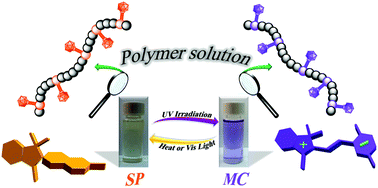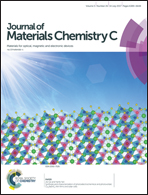Facile and fast photosensing of polarity by stimuli-responsive materials based on spiropyran for reusable sensors: a physico-chemical study on the interactions†
Abstract
Stimuli-responsive materials based on spiropyran, which show reversible solvatochromism and photochromism under UV irradiation, could be used for advanced devices such as chemical sensors, optical data storage devices, and optical switching displays. Here, the solvatochromic behavior of spiropyran in some protic and aprotic solvents was studied by UV-Vis analysis individually and the “Hansen solubility parameter” and “solvent–solute interaction parameter” for spiropyran-based materials were predicted for the first time. Opposite to the aprotic solvents, irreversible solvatochromism was observed in the protic solvents. The obtained results were employed to find relationships between the spectroscopic characteristics of spiropyran derivatives and the intrinsic parameters of the solvents such as solubility parameters and polarity. These revealed significant dependency of solvatochromic behavior on hydrogen bonding and the polarity of the protic solvents, while the dispersion solubility parameter and solvent polarity were the determining parameters in aprotic solvents. They were used to design a photoswitchable smart polymeric system for photodetection of polarity in polar and non-polar media using Reichardt's empirical polarity factor. Therefore, a spiropyran-based photochromic copolymer (PC) was prepared and its solvatochromism, photoswitchablity and reversibility were investigated in aprotic solvents to show its potentiality as a polarity sensor. The solvatochromism of spiropyran moieties in PC solutions was found to be influenced by polarity and solvent–solute interactions. The obtained PC film was studied for its response to polarity, photostability and reversibility in protic environments under UV irradiation. Interestingly, this can provide an opportunity to predict solvent parameters like dielectric constant, partial solubility parameters and polarity from optical properties of such films in sensors.



 Please wait while we load your content...
Please wait while we load your content...